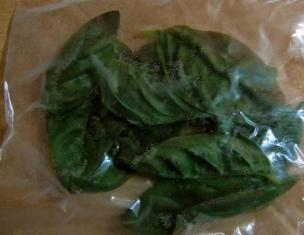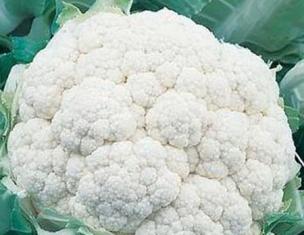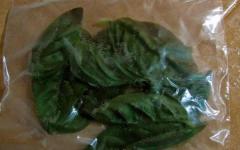Preface
Green borscht is a must-have spring and summer dish, tempting with its sourness, freshness of taste and appearance. But who said that green borscht cannot be tasted in the middle of winter or early spring, when there is still no greenery at all? Preparing sorrel for the winter includes many different recipes, thanks to which you will stock up on a healthy product.
Rolled up cannot be frozen - choose a preparation method
When you touch on the topic of preparing sorrel, you will probably come across dozens of different recipes, videos and even more tips. All methods can be divided into two groups: freezing; canning in glass jars. In turn, canning in jars is divided into salting, sterilization, canning in its own juice, and canning in spring (well) water.
The last two methods involve the least impact on sorrel and allow you to prepare fresh herbs for the entire fall and winter. Oxalic acid, which is found in abundance in this plant, is an excellent preservative, and therefore in preparing sorrel you can actually get by with two ingredients - leaves and clean water.
To store the workpiece, you will need a dark place with a constantly low temperature, for example, a basement or cellar. If there are no such storage conditions, then you will have to choose another method. Of all the methods listed, freezing seems to be the easiest, especially if you have a large freezer compartment in your refrigerator. However, you should know that the same sourness is practically not preserved.
Harvesting without sterilization - details about the main thing
By the way, for a long time this plant was considered a weed, albeit a medicinal one. However, the Slavs began to use leaves with an interesting sourness directly as food relatively recently, after the Europeans. But, having tasted all the delights of dishes with sorrel, it was the Slavs who made it an indispensable attribute of Russian national cuisine.
You can prepare sorrel without sterilization in several ways - we recommend that you personally test everything to determine the most convenient one. First, you need to prepare the material - you need to sort out the sorrel leaves, selecting only whole ones, without stains or traces of insects. Place them in a basin and fill them with water for half an hour - during this time all the dirt will come off of them . Water for this simple operation should be taken from a spring or a village well, in a word, so that it is without chemicals and any purification.
When the water has drained from the leaves, you can cut them in a way convenient for you - some chop them roughly, dividing the leaves into several large pieces, others immediately cut them, like for borscht or soup. There is no fundamental difference. It is important to include the petioles when slicing, since they contain a lot of oxalic acid.
- So, the first recipe, which we have already mentioned, is preparing fresh in spring water. Everything ingenious is simple! Fill a liter jar with the slices, quite tightly, but at the same time effortlessly. Fill it with clean spring water (you can just use well-purified water) and close it with a metal or thick nylon lid, as in the video. This will allow you to preserve greens without boiling. A liter jar is usually enough for two preparations of green borscht. To make the dish more flavorful, you can add a bunch of dill to the sorrel.
- The second recipe differs from the previous one in that the jar should be packed very tightly, pushing in as much greenery as possible with a wooden spoon. Pack the sorrel so tightly that it releases as much juice as possible. In this case there is no need for any filling. Many people recommend placing a clean cabbage leaf on top and pouring salt on top of it, and then closing the container with a sterile nylon lid. Cold and lack of light will help preserve this workpiece, as in the previous case.
These options in the photo and video look very tempting, they are easy to prepare, but what if there is simply nowhere to store such preparations in the apartment? The pantry is dark, but not that cold, and the balcony is cold, but not dark at all. Without proper storage conditions, the product may go to waste. In this case, salting would be the best option. Salt, like oxalic acid, is a very good preservative; moreover, sorrel will retain a maximum of vitamins and microelements.
Wash and chop the sorrel, as in previous cases. Mix it with salt in a spacious bowl or pan. For a liter serving, 3 tablespoons of salt is enough. After mixing the ingredients well, fill the jar tightly and close with a nylon or metal lid. The more salt, the longer the product will be stored. Some people recommend pouring additional vegetable oil on top so that it covers the top by 1 cm. When preparing dishes, do not forget that you should add very little salt.
You need to understand that the shelf life of such preparations is about 3-6 months. The less manipulation you have done with sorrel, the more difficult it will be to preserve it. Try to eat fresh sorrel prepared using the first two methods first; in winter, you can think of a salted product, and in the spring, sterilized according to the recipes and videos given below will come in handy.
We sterilize the product - preparations for a long period
Let's start with a simple one - pre-boiling the sorrel. Prepare pre-sterilized jars and lids, liter and half-liter. Place the washed and chopped sorrel in a large saucepan, lightly compact it and pour in enough water to lightly cover it. Over medium heat, bring the contents of the pan to a boil and wait until all the sorrel changes color.
As soon as this happens, distribute it among the jars and close with metal lids. Add this ingredient to borscht a little later than fresh sorrel, because it is already boiled. Canned sorrel for the winter according to this recipe can be stored until the new harvest. A more conservative method is to sterilize jars with the preparation for 10 minutes. However, if you look at it, there is no point in these actions - we are sure that among the previous recipes you have already chosen the most suitable one for yourself.
Oh yes, we almost forgot about freezing - this is the longest way to store greens, along with canning. As mentioned above, after freezing, sorrel will lose its characteristic sourness, however, it is valued not only because of this. For freezing, you can use both sliced and whole sheets. Distribute them into separate bags so that after defrosting the entire portion is used for preparing the dish. The optimal temperature for long-term freezing is from -18 °C to -24 °C.
The benefits of sorrel - why are we trying?
Indeed, is it worth the effort when preparing sorrel - will it be useful for you and your family? Potassium, magnesium, iron, calcium, tannins, vitamins C, B, K - this is not a complete list of substances contained in the leaves. In addition to preparing delicious dishes, you can always use it for prevention or treatment. A decoction of sorrel is very good in the fight against bleeding gums, sore throat, and also as an anti-inflammatory agent.
Sorrel activates the body's protective functions, promotes the formation of bile and improves the functioning of the gastrointestinal tract.
This plant has always been considered an effective antiscorbutic and analgesic and was used as a hemostatic and blood purifying drug. But do not forget about contraindications. Thus, it is not recommended to consume sorrel for a long time - oxalic acid in high concentrations can cause metabolic disorders in the body. Eating this plant should in principle be avoided by those who have kidney problems.
Inorganic oxalic acid accumulates in the body, which is formed after heat treatment. But fresh sorrel is completely safe, although you can’t eat a lot of it. Just try to eat a variety of foods, including green borscht or green cabbage soup from time to time, and then your body will only benefit.
Sorrel is an essential ingredient for preparing such a delicious dish as green borscht. It is also used as a filling when making pies. It has a pleasant sour taste and contains many substances beneficial to the body.
Fresh sorrel is available only in summer. But if you use canning, then these greens can be used all year round. Several recipes on how to preserve sorrel for the winter will be useful to those who want to prepare this product at home.
One of the simplest methods of preparing sorrel for the winter is freezing it in the freezer. The advantages include ease of preparation and long shelf life without preservatives.
In low temperature conditions, you can keep sorrel fresh for at least 1 year. In addition, quick-frozen foods retain vitamins, taste, smell and shape better than using any other preservation method. The semi-finished product is frozen in the freezer for preparing first courses and used as needed.

Fresh sorrel can be stored for no longer than a month: only in the refrigerator, in a closed jar or bag
To prepare a frozen product you will need the following items:
- shallow plastic or enamel basin;
- colander;
- clean kitchen towel;
- sharp knife;
- cutting board;
- packaging bags or containers for products.
Here's how to properly freeze sorrel for the winter:
- Take bunches of greenery that you just purchased at the market or collected from the garden.
- Sort through them and remove all yellowed and limp leaves.
- Pour clean water into a basin and put the greens in there, leave for 5 minutes.
- Place the leaves in a colander and rinse them under running water.
- Cut off excess petioles, leaving only 1-2 cm.
- Place the leaves on a towel, cover, and let dry for 10 minutes.
- Cut into strips up to 0.5 cm wide.
- Place the cuttings in bags or containers in portions designed to prepare one.
- Remove excess air from the packaging.
- Place bags and containers in the freezer.
Prepare as much product as you need to prepare borscht until the new harvest of fresh herbs. If you wish, you can add a little and to the freeze at the cooking stage. This will be another option for freezing sorrel for the winter, but only improved.
Do not defrost sorrel before cooking. Just take it out of the refrigerator, remove it from the packaging and place it in boiling water in its original form.
Do you know that…
When frozen, sorrel slightly loses acidity, so when serving in portions, add a little more of it than fresh. The taste of the final product is also affected by the variety. For example, “Nikolsky” has low acidity, and “Malachite” is medium acidic.
The entire freezing technology is shown in this short video:
Second method: salting
Try pickling greens in jars for the winter. The process of preparing such preparations is simple and not labor-intensive. For canning you only need fresh sorrel and.
In its own juice
There are many ways to preserve greens for storage during the winter months. Here is a recipe for preparing it in your own juice. You will need:
- sorrel (1 kg);
- salt (100 g);
- wide pelvis;
- 0.5 l cans;
- covers.
For preparation:
- Sterilize the jars over steam and place them upside down on the table.
- Sort through the plants, remove all yellow and damaged leaves.
- Wash under running water.
- Cut into strips.
- Place in a bowl and add salt.
- Leave for 1-2 hours so that the sorrel releases its juice.
- Place the mixture tightly into dried jars.
- Close the jars with boiled tin or hot nylon lids.
How to store sorrel throughout the winter? Place the jars in the cellar or keep them in the refrigerator.
In brine
- Take bunches of greens, sort them as usual, and wash them under running cool water.
- Trim the stems and remove the yellow leaves.
- Place the leaves on a board and cut into thin strips.
- Prepare the brine at the rate of 50 g of salt per 1 liter of boiling water.
- Pack the greens tightly into sterilized jars.
- Pour boiling brine over it.
- Cover the jars with tin lids.
- Wrap the preserved food in a warm blanket until it cools completely.
Use a pantry or cellar to store sorrel for the winter.
Tip of the day
Before preparing this sorrel recipe, drain the brine, or only part of it, before adding the ingredient to the pan.
In the form of vitamin puree
Puree is another way to prepare sorrel for the winter. Making it is also not difficult.
To prepare you will need:
- sorrel;
- salt;
- jars with lids;
- meat grinder or food processor.
Prepare the greens in the same way as in the previous canning options. Sort it out and wash it, and then start cooking:
- Grind the green leaves in a meat grinder or food processor.
- Place the mixture in a bowl and mix with salt at the rate of 50 g of preservative per 1 liter of puree.
- Let the mixture sit for about 1 hour.
- Place the mixture in half-liter glass jars.
- Roll them up with tin lids.
Place the jars with the preparations in a cool and dark place. Suitable: lower compartment of the refrigerator, cellar or basement.
If you are afraid of excess salt, you can do without it. The salt-free canning process is shown in the short video below:
Third method: drying
Fresh sorrel can be dried to be used throughout the cold season. Try and evaluate the benefits of how to keep sorrel dry for the winter.
Natural
For preparation:
- Prepare the greens.
- Place it on a dry towel in a thin layer.
- Leave to dry for several hours.
- Gather 10-15 stems into bunches and hang them in the shade or in a well-ventilated room.
- Leave the bundles to dry completely for 1-1.5 weeks.
Store dried herbs in boxes or containers in a dry, dark place such as a kitchen counter, cabinet or pantry.
Tip of the day
In winter, before using, first soak the dry preparations in cold water for 1 hour, and then add them to the dishes you are preparing.
Accelerated
Prepare the greens: remove unusable leaves, wash, and drain. Spread a towel on the table, place a thin layer of green leaves on top of it.
- When the leaves are dry, cut them into strips up to 1 cm.
- Place them on a baking sheet or in an electric dryer.
- Place the baking sheet in a warm oven, preheated to 50°C, and dry for 2 hours, turning the slices regularly.
- Set the temperature in the electric dryer to 40-45 °C and keep the greens in it for 1 hour.
- Allow the dried ingredients to cool.
- Place dry leaves in dark glass jars or ceramic containers with a volume of no more than 0.5 liters.
- Close the containers tightly with lids.

It is better to harvest sorrel in early and mid-summer. By autumn it will become too sour due to excess oxalic acid
Now about how to store the dried product:
- Place the jars in a convenient place, such as a table or cabinet.
- Do not expose them to sunlight or contact with aromatic substances.
- Keep product containers only in a dry place.
- From time to time, inspect the contents to prevent pests from infesting them and to avoid an unpleasant mold smell.
Prepare sorrel for the winter in different ways to find out which one suits you best. Use this healthy product in the cold to diversify your table and provide your body with the vitamins that these greens are rich in.
Store correctly and be healthy!
The most fortified greens in the world are sorrel. Its leaves contain a high content of malic and citric acid, vitamin C, proteins and sugar. The vitamin B content is higher than other known herbs. Therefore, its frequent use is beneficial and helps to avoid many diseases. To do this, you can easily stock up on a small amount for the winter.
Ascorbic acid, found in the greens of the plant, fights viruses well and strengthens the immune system. Vitamin A will help maintain vision and youthful skin. And to preserve complexion and purify the blood, it contains iron. A large amount of fluoride will help preserve and improve the condition of teeth and bones for a long time. The heart and blood vessels are no exception; the potassium contained in this greenery makes them stronger, as well as magnesium, which controls the functioning of the nervous system.
Sorrel is also widely used in folk medicine. It is used as a hemostatic, hematopoietic and choleretic agent, and an antiseptic. Regular consumption of greens helps to combat indigestion, scurvy, and poor appetite. The leaves and stems also contain tannins, which help fight infections in the body. The use of sorrel for gargling is no exception. In winter, when it is impossible to find greenery, it can be prepared in the summer using a wide variety of methods.
Video “How to prepare sorrel for the winter”
Demonstrative video with instructions for preserving greens for the winter.
Effective and simple ways
In their natural form, greens are stored in the refrigerator for no more than two days. When the leaves begin to fade, the sorrel can be placed in a mug of water. This method is for quick use.

The preservation method leaves the taste, but some beneficial properties are lost. For the preparations you will need 750 g of sorrel and 250 ml of water and several sterilized jars. The leaves should be sorted well and washed. Then they need to be blanched in boiling water for a couple of minutes. Leaves are laid out in prepared jars and rolled up. The jars should be turned upside down and left to cool. After cooling, such jars can be stored in basements, refrigerators, and cellars.
You can also preserve it in its own juice. Place jars filled with leaves in a large saucepan filled with water. Turning on the heat, the greens begin to gradually settle. After each settling, more fresh leaves are added, and this continues until the jar is full. Such preservations are covered with plastic lids and placed in a cool place. Greens preserved in their own sour juice allow you to preserve their taste for a long time. This preservation can be added in winter to first courses, salads and side dish sauces.

The fermented method was no exception. Young leaves are boiled in salted water and placed in a saucepan. Then pour in the broth, which has cooled down, and put pressure on it.
Cold salting has also become a quick way. Finely chop the greens and place them tightly in jars. In this case, it is worth sprinkling the layer with salt. Close the jars tightly with a nylon lid and store the pickling in the refrigerator.
Drying
Some housewives prepare sorrel as a seasoning for the winter, while drying it. After examining the leaves, washing them under running water, dry them well. After the final removal of moisture, it is cut and laid out on paper and covered with it. It should be placed in a sunny place, for example, a windowsill. The paper will absorb the remaining moisture, and the sun will dry the greens. The storage of this type of workpiece is very long. You can use it in cooking or as a seasoning by grinding the dried leaves into powder.

Freezing
Currently, many people prefer storing fruits, vegetables, and herbs in the freezer. By freezing sorrel you can preserve the greatest amount of vitamins. There are a few preparation steps you should take before freezing:
This way you can use a natural ingredient in winter. It does not need to be defrosted, but simply placed in a pan.
Demonstrative video about freezing greens.
Sorrel. At the mere mention of it, every person gets a pleasant sour taste in their mouth. In spring and summer, he is a frequent guest on the Russian table. How to store sorrel? After all, in winter, sometimes you also crave green cabbage soup. You can’t just leave the juicy leaves in the refrigerator; they will quickly spoil.
Popular wisdom has long come up with ways to store sorrel. Of course, with your own secrets.
Sorrel storage methods
In order to have vitamins on the menu all year round, there are several options for storing sorrel:
- drying
- pickling
- conservation
- freezing
These methods have been tested for several generations, are quite reliable and retain most of the vitamins.
Preliminary preparation
Before storing sorrel, you need to prepare it. Freshly cut leaves are first shaken off dry debris. Next, they carefully sort through, removing spoiled and damaged ones, and cut off the hard petioles. After all, the greens are washed in several waters, and the liquid is lightly shaken off.
Advice. Medium-sized leaves are suitable for preparations. The small ones have not yet gained the required amount of acid, the large ones are already too rough.
How to dry sorrel correctly
Like any greens. Sort, rinse, spread in a thin layer. Turn over from time to time. In warm, sunny weather, the leaves dry completely within 5 days.Then they are carefully transferred to glass jars and tightly closed with lids. For ease of further use, you can lightly crumble the drying mixture. Burdocks floating in soup are not a very pleasant sight.
Pickling sorrel
Prepare the leaves as described above. Next you will need a knife, cutting board, and regular table salt.
Take 100 g per 1 kg of raw materials. The sorrel is cut crosswise into strips about 3 cm wide and quickly mixed with salt in a large bowl. Then, without delay, they are compacted into jars or food containers so that the juice that begins to release remains in the workpiece.
The jars are closed, but not sealed, and placed in the refrigerator. This storage method is not suitable for a cellar.
Advice. Mixed with sorrel, you can pickle your favorite herbs: dill, green onions, cilantro. Except parsley. Nutritionists do not recommend salting it raw.
Freezing
Carefully prepared sorrel in advance is laid out in plastic bags or special food containers, closed, and put in a simple freezer.
You don't have to cut the leaves. Frozen, they crumble easily with your hands. This sorrel can be stored for 4-5 months.
Advice. To ensure that garden herbs take up less space in the freezer, you can use special vacuum bags with a zipper. Then the frozen layer will be very thin.
A great storage option for those with a small refrigerator. The prepared leaves are cut without petioles and placed as much as will fit in glass jars. Place them in a saucepan with water and turn on the heat. Gradually the greens settle, which means it’s time to add a new portion. They do this all the way to the top. Then the jars are sealed with metal lids, cooled and stored in a pantry or cellar.

This preparation is notable for the fact that it does not require additional costs - vinegar, sugar, spices. Sorrel is well stored in its own juice, even at room temperature.
By opening a jar in winter, you can prepare green cabbage soup and a filling for pies. It is good to add canned sorrel to salads and sauces.
Advice. During the harvesting process, the greens change color to olive. However, this does not change the taste and beneficial qualities.
Common Mistakes
Many housewives immediately wash sorrel. How? Place all the greens in a large bowl and fill with cold water. The leaves splash a little and are thrown into a colander. In this case, all insects remain between the leaves. Well, what’s stopping you from sorting out the sorrel in advance? You can replenish the body’s protein reserves in more traditional ways than the chitinous shell.
More. How do women prepare winter preparations? They tightened it more securely and hop - with the usual movement they turn the jar over onto the lid. You can’t do this with sorrel. It contains so much acid that it eats away the food varnish on the inside of the lid. Opening such a jar in winter, you can get a beautiful mixture with rusty stains. Iron is good, but not in the same way!
Many articles recommend drying sorrel by exposing it to direct sunlight. Supposedly it's faster. Well, haven’t mothers drummed into today’s housewives since childhood that greens are dried only in the shade? Isn't sorrel green? If you want to speed up the process, the oven comes to the rescue.
Before drying, sorrel should not be cut. Most of the juice will leak out, and instead of crispy leaves you will get dried rags. And almost all vitamins will oxidize.
Some housewives believe that 100 g of salt is not enough. This is not true. Oxalic acid is an excellent preservative. Why add extra “white poison”?
It happens that during cooking, all the sorrel is defrosted at once, the required amount is taken, and then re-frozen. This is strictly not recommended! Break off the required amount of frozen food, immediately throw it into the pan, and quickly put the rest back - these are the right actions.
In order not to bother with a whole frozen bag, put the greens into portioned bags for one time.
Naturally, all containers for workpieces and lids must be pre-sterilized. Sorrel is sour, but not immortal; it spoils in dirty jars.
With the cold salting method, after long-term storage, a white coating sometimes appears on top of the sorrel mass. Someone opens a jar, wrinkles their nose, the product goes into the trash... what nonsense? Is ordinary salt no longer suitable for human consumption? It's just a salt coating. And it's quite edible.
“Before harvesting, pour boiling water over the sorrel and dry.” Big mistake! The leaves, even large ones, are so tender that any heat treatment will turn them into mush. How then to store the resulting mess? No pre-treatment with boiling water!
For the same reason, sorrel is not wiped. And then there are such would-be advisers: “Wipe the leaves thoroughly on both sides with a rag or napkin.” And what to do with the limp rags afterwards? Just drain in a colander or shake off the water from a bunch of greens. With a movement like shaking a thermometer.
Cutting the leaves as small as possible is another piece of crazy advice. Why crumble it into mush? To lose all the leaked juice? Or have nothing to chew? So, after any storage method, sorrel becomes soft. There is no point in doing extra work.
If you don’t trust canning in your own juice, you can calm your darling. Before screwing, place a teaspoon of salt on top of each liter jar without stirring. Distribute evenly and roll up. Now it’s definitely nowhere more reliable.
Video: how to prepare sorrel for the winter
Sorrel is one of the first plants that begin to delight the eye with bright greenery in mid-spring. Its juicy sprouts hatch almost immediately after the snow melts. And it is not surprising that wise Nature took care to put the maximum of useful elements into its leaves. Like its closest relative, buckwheat, sorrel contains a significant amount of vitamin C, vitamin B, beta-carotene, calcium, phosphorus, and fluorine. This plant is also rich in essential oils. But its main value is the abundance of organic acids, among which oxalic acid predominates. The most useful are the first, spring leaves.
But by mid-summer, sorrel becomes rough, and its taste loses its richness. This suggests that there are not so many useful substances left in it. But you want your favorite green borscht not only in the summer? Therefore, there is a need to stock up for future use. There are many ways to preserve sorrel for the winter. Let's look at a few of the most popular ones.
Preparing sorrel
The collected leaves must be carefully sorted one by one. The fact is that not only people, but also garden slugs love to feast on sorrel. And not a single recipe provides for their inclusion in the jar.

It is advisable to soak the leaves briefly in warm water so that all the dirt and dust are soaked. It is better to wash in running water, carefully inspecting the leaves for dirt. It is convenient to cut sorrel with ordinary kitchen scissors.
How to close sorrel for the winter? Roll into jars in a simple way
In fact, this vegetable does not need any sterilization or even salt and vinegar. To prepare sorrel for the winter, just put the chopped leaves in pasteurized jars, pour boiling water over them and roll them up. The same oxalic acid acts as a preservative. It prevents the proliferation of microorganisms no worse than vinegar. To prepare sorrel for the winter, this recipe is perfect. Especially if you plan to use it for regular borscht.

Canning in brine
Preservation until winter is not the only condition for canning. Sometimes you want to add taste, aroma, richness. For such cases, another, also not very complicated, recipe is suitable. Salting sorrel for the winter is done using brine prepared according to the following recipe:
- salt - 50 g;
- pepper and bay leaf;
- water - 1 liter.

Salting sorrel for the winter is done in the following way. Sliced sorrel is placed in jars, and boiling brine is poured on top. After this, the jars can be immediately rolled up, wrapped and left to cool completely.
Spicy and spicy
Among the many ways to preserve sorrel for the winter, there are also recipes based on pickling. This not only allows you to preserve the product, but also gives the sorrel a more expressive taste. As a rule, very little citric acid or vinegar is added to the marinade, literally half a tablespoon per liter. And, in addition to acid, sugar is also added to this recipe. You can have more of it - 2-3 tablespoons for every liter of liquid. Sugar will smooth out the harsh taste of acids and add softness. And it also acts as a preservative.

Freezing
Sorrel can be prepared for the winter not only through preservation. The recipes that we traditionally use can be varied by freezing. This harvesting method is good because it does not require much effort or time. To freeze, simply cut the sorrel into strips and place in bags. Then you need to squeeze out as much air as possible from the bags and tie them up. This will save space in the freezer.
Dried sorrel
Drying is another unusual way to preserve sorrel for the winter. You can dry cut strips or whole leaves. If the sorrel is cut, then all the strips should be laid out on a tray and placed in the sun. It will dry for about 3-4 days. You can simply hang whole leaves in a bunch and wait until all the moisture evaporates.
Using harvested sorrel for cooking
In winter, you can cook all the same dishes that we cook in May-June. Sorrel is used to prepare green borscht, cabbage soup, and pie filling. Sorrel is added to vegetable stews, lecho, sauté. Grinded with a blender, it can be added little by little to mashed potatoes - this will give the dish an incredible bright green color and piquant taste. Sorrel goes well with cottage cheese, boiled eggs, cheese, and herbs. This filling can be placed in oven or fried pies, or wrapped in pita bread. All kinds of sauces are prepared from it, which go well with fish and noble seafood. And sorrel decoction makes a wonderful dressing for okroshka.

The wide range of dishes that can be prepared in winter from summer preparations makes us take care of one more thing in advance. Before storing sorrel for the winter, you should think about portions. You should not store the contents of an open jar for a long time; it is better to use it immediately for cooking. It is also strictly forbidden to refreeze defrosted sorrel, otherwise it will lose its shape, color, and all its beneficial substances. The cooking time of the sorrel is also important. It cooks very quickly, especially if it has already been heat treated. Therefore, you need to add it to the dish at the very end of cooking. A sign that sorrel is ready is its grey-green light.
When using frozen sorrel, do not defrost it. Usually it is dipped into boiling water as a frozen briquette, after which it is boiled until tender.









